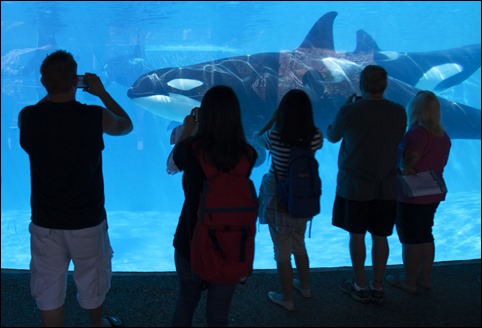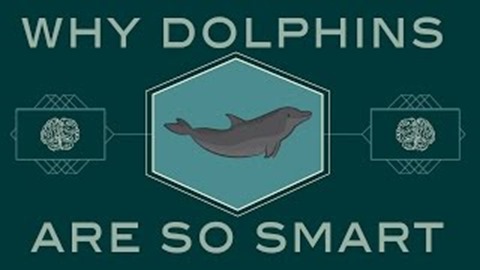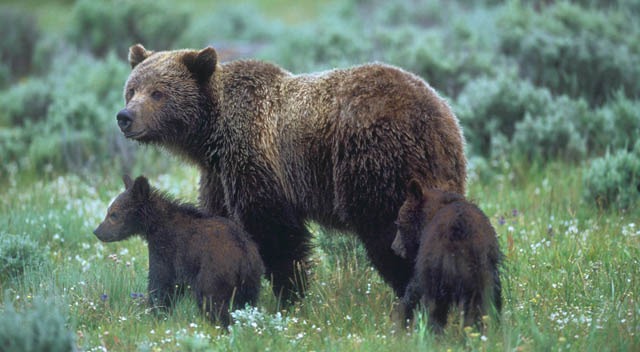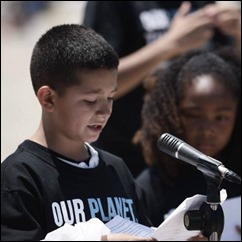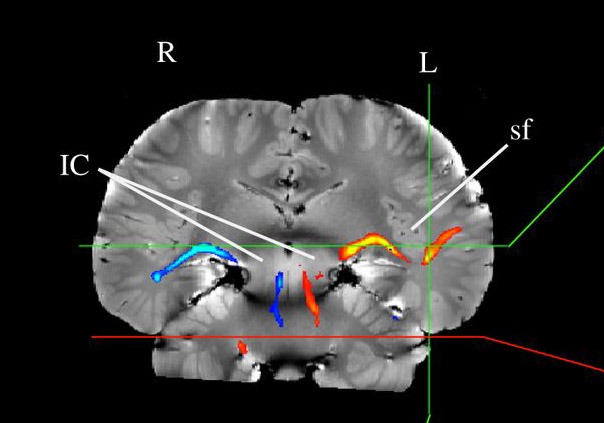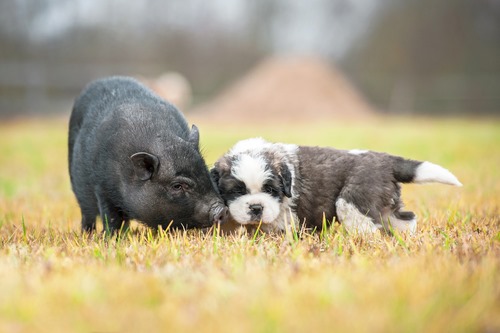There’s Nothing "Natural" About SeaWorld’s New Plan
It didn’t take long for the major media to figure out that the latest announcement from SeaWorld was largely smoke and mirrors.
Yesterday, in the wake of mounting protests over its treatment of animals and hemorrhaging revenue from its downwardly spiraling public attendance, SeaWorld announced it would end the “theatrical killer whale experience” in San Diego by the end of 2016.
SeaWorld’s chief executive Joel Manby said:
“We are listening to our guests, evolving as a company, we are always changing. In 2017 we will launch an all-new orca experience focused on natural environment [of whales]. 2016 will be the last year of our theatrical killer whale experience in San Diego.”
This “natural environment”, called the Blue World Project, is basically a larger tank, motorized water currents, and live fish and kelp. Instead of their current offerings, SeaWorld promises a more educational form of entertainment.
Killer whales have three basic needs: space, social complexity and choice, and mental challenges. None of these are addressed
in SeaWorld’s new plan.
But none of the real issues have been addressed, and this new plan is essentially an attempt to create a distraction from the critical issues for which SeaWorld continues to draw criticism. Just for starters, SeaWorld will continue its “theatrical” orca shows at its other two U.S. facilities in Orlando and San Antonio. And the company intends to continue breeding orcas for entertainment at all three parks. From an orca’s point of view, nothing is basically going to change.
In order to thrive, killer whales have three basic needs: space, social complexity and choice, and mental challenges. None of these are being addressed in SeaWorld’s new plan:
Space: SeaWorld says its new tanks in the proposed Blue World expansion are going to be twice the size of their current tanks, claiming that “the enlarged environment will provide killer whales with even more dynamic opportunities. It will support the whales’ broad range of behaviors and provide choices that can challenge them both physically and mentally.”
But the new tanks are a minute fraction the size of even the smallest orca natural habitats. The new 10 million-gallon tank will be 50 feet deep and have a 1.5-acre surface area. Orcas naturally travel over 75 miles a day and dive to depths of over 300 feet. The new tanks would not even accommodate diving to a depth of two body lengths in whales, who can grow to 32 feet long. The new tanks may seem large from a human perspective, but from an orca perspective the change is negligible.
Social Complexity and Choice: SeaWorld’s plans continue the same model of forcing the whales into artificial social groups in which mothers and children are separated and individuals from different natural subpopulations and cultures are thrown together and forced to mate. Orcas are highly intelligent and socially complex animals who naturally live in cultural subgroups in which every individual has a role in the social network. Mothers and children are deeply bonded and stay together sometimes for life, and life is based on a long period of learning from each other. Whether hunting, playing, resting or traveling, orcas always travel in groups with other family members and friends. Their complex social structure, long-term relationships, and exquisite cultural traditions are comparable to those of humans and elephants.
Orcas are not interchangeable units and cannot be moved around and forced together in unnatural ways without severe consequences for their mental health.
Mental Challenges: SeaWorld claims its new tanks are going to be more “naturalistic”, providing the whales with more enrichment features which “maximizes the health and wellbeing of the animals,” like a fast running water current to simulate the dynamism of the natural environment.
But orca brains are among the largest of all living mammals, more than two and a half times the size one would expect for their body size, and more convoluted (i.e. more grey matter surface area) than even human brains. Their brains have highly elaborated structures that are thought to be involved in self-awareness, social cognition, and emotions. In other words, orcas are among the most psychologically and behaviorally complex animals on the planet.
Animals with brains like orcas are not enriched by unchanging, one-dimensional features of their environment that pose no new challenges. The new features of Blue World do not even come close to the complexity and mental challenges they enjoy in the wild.
SeaWorld cannot provide a “natural environment” for these whales while ignoring the facts about who orcas are.
To make a real change SeaWorld would need to do two things:
First, end the (mostly artificial) breeding and display of orcas for the benefit of entertainment and ticket sales.
And second, assume leadership in the growing movement towards sea pen sanctuaries for orcas and other marine mammals, where they can either be rehabilitated and returned to the ocean or, at very least, spend the rest of their lives in a setting that’s as close as possible to the open ocean.
Only then will SeaWorld be the welfare and conservation organization it only pretends to be now.

